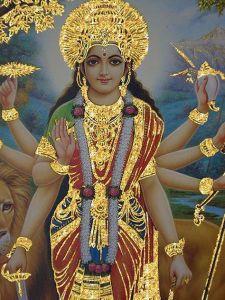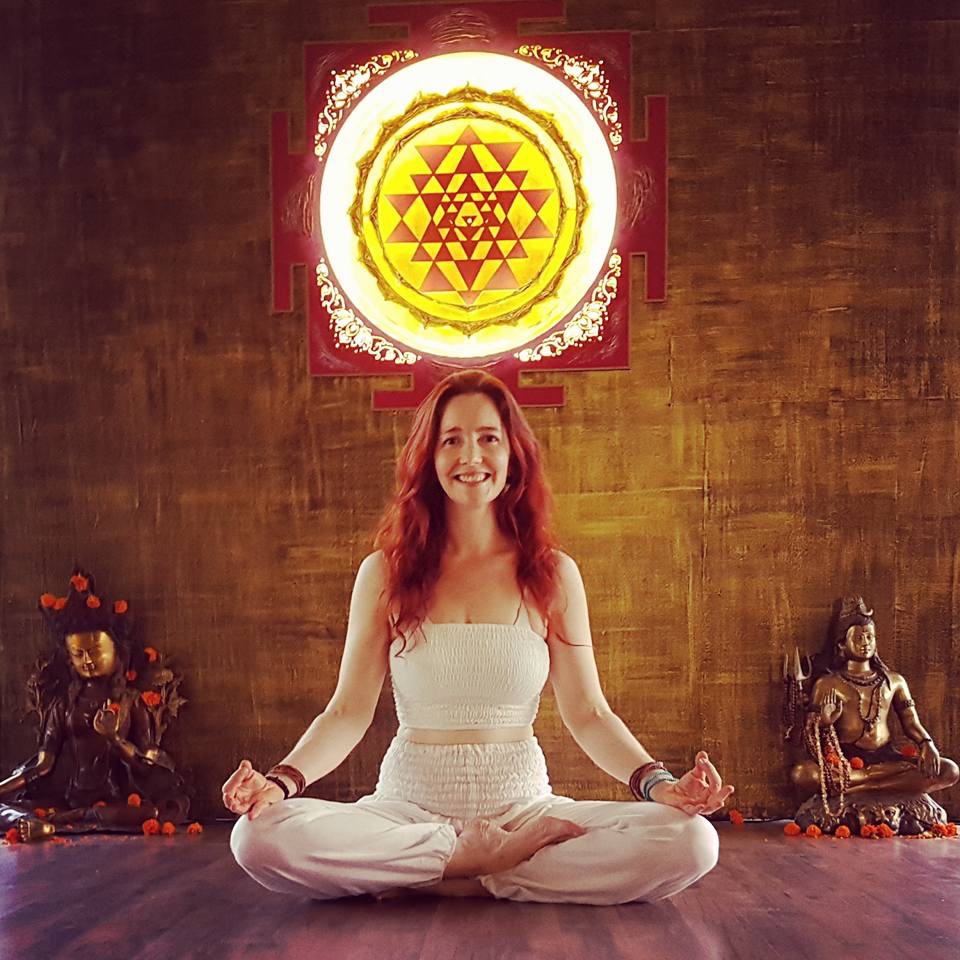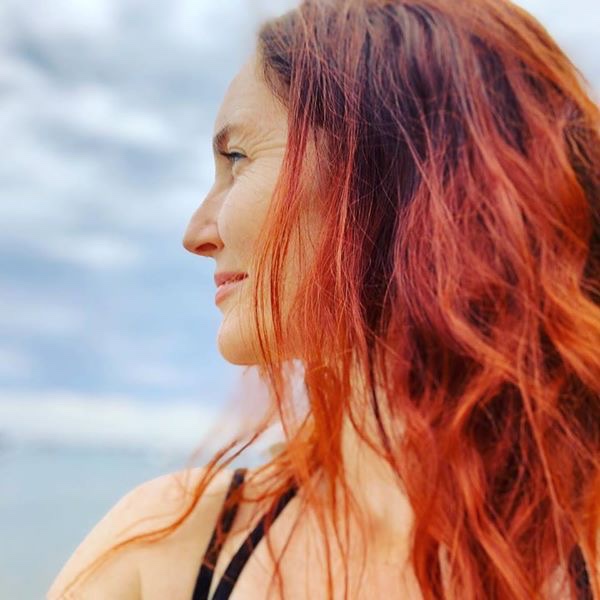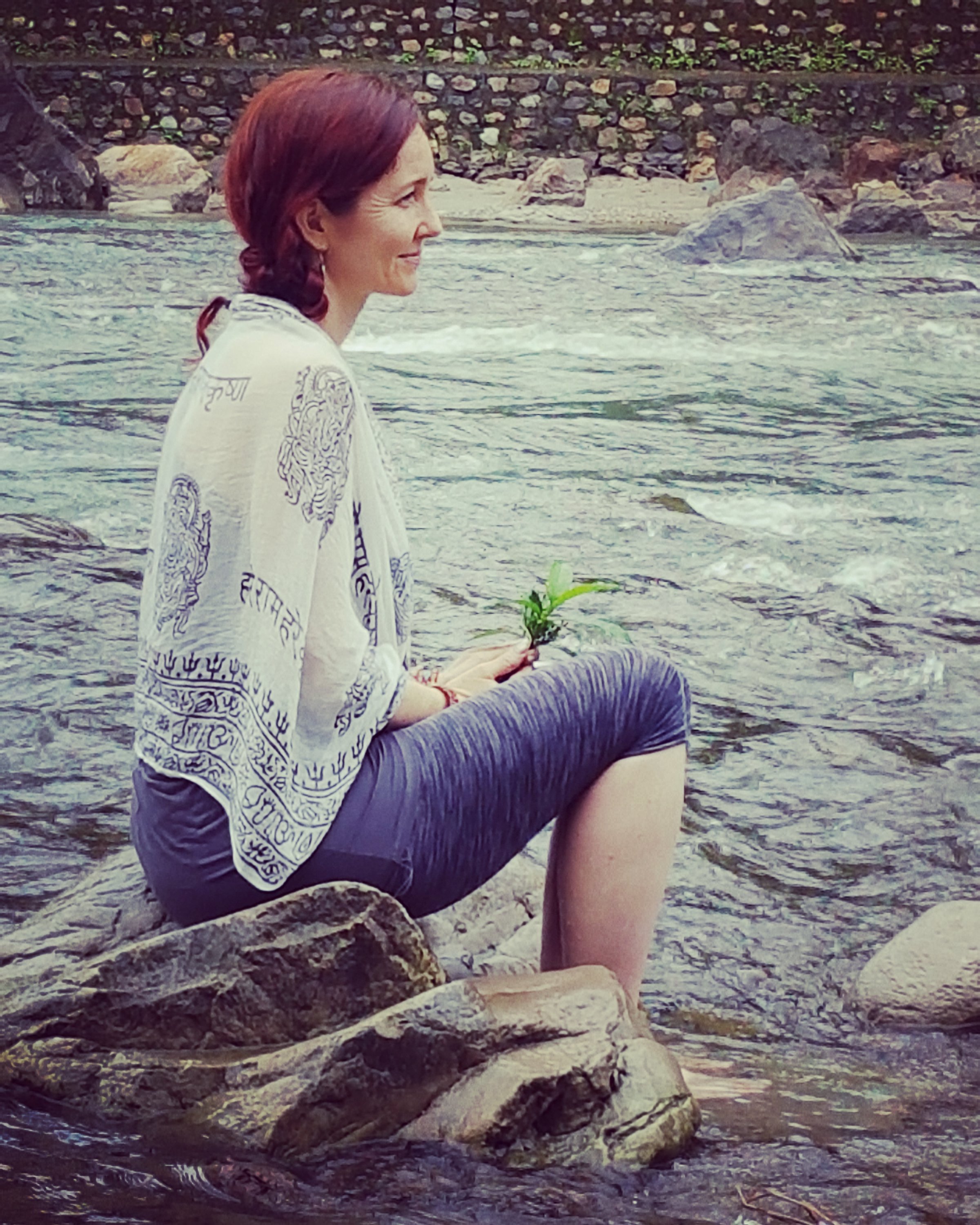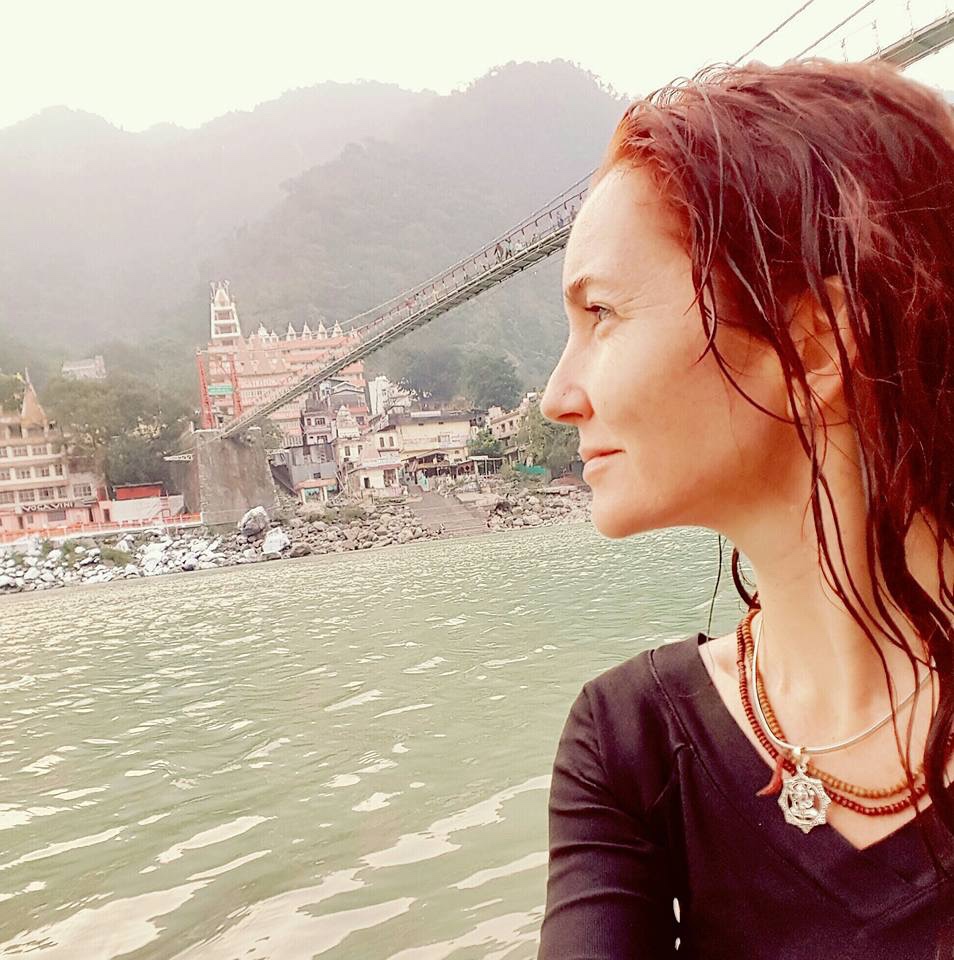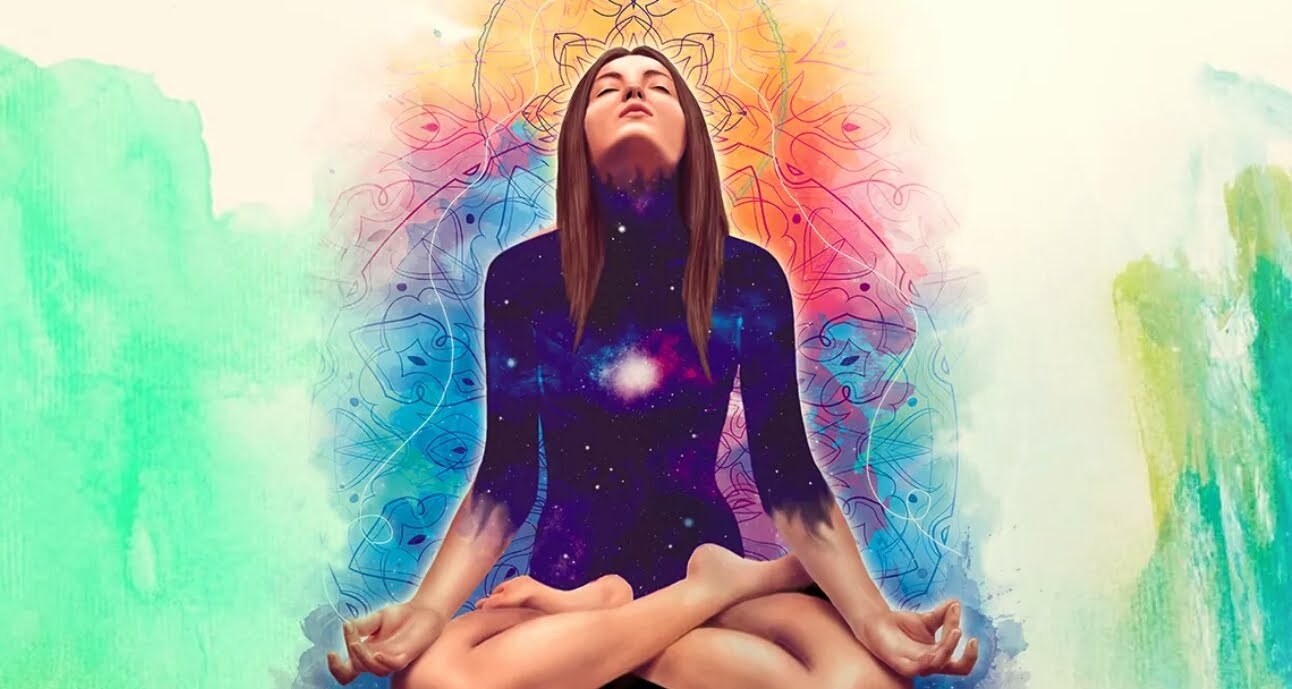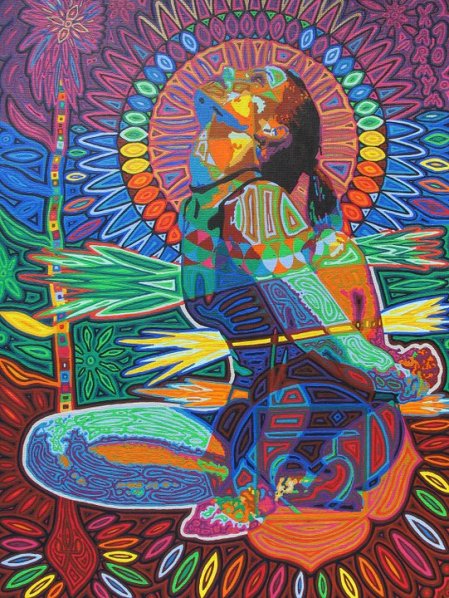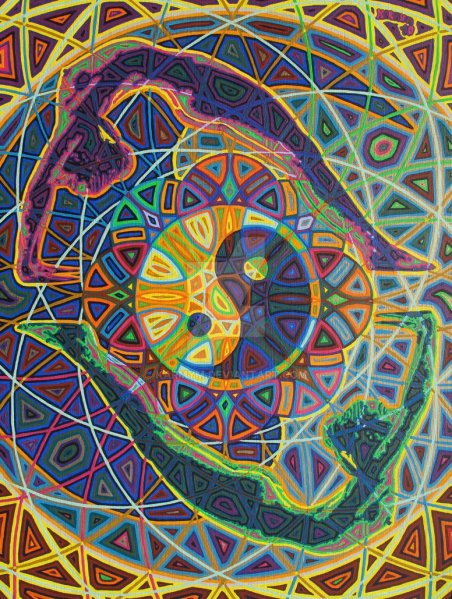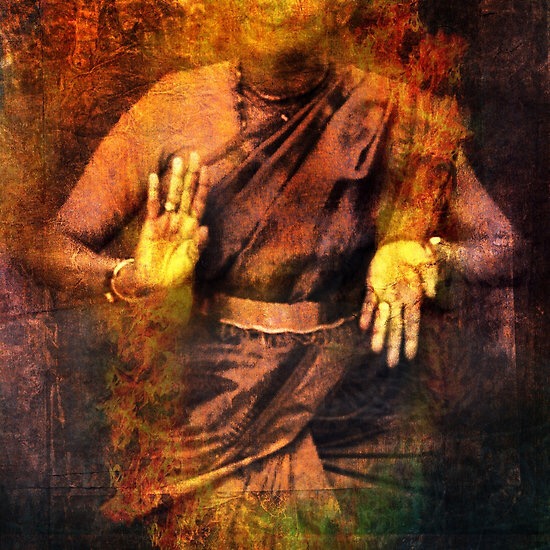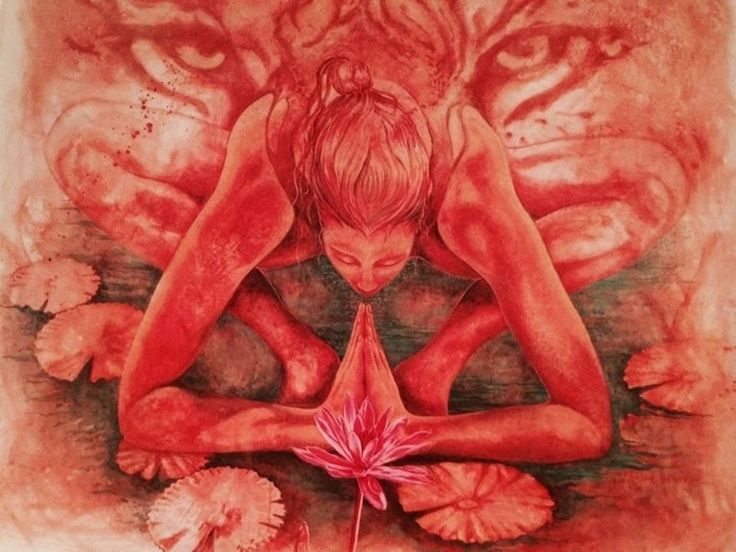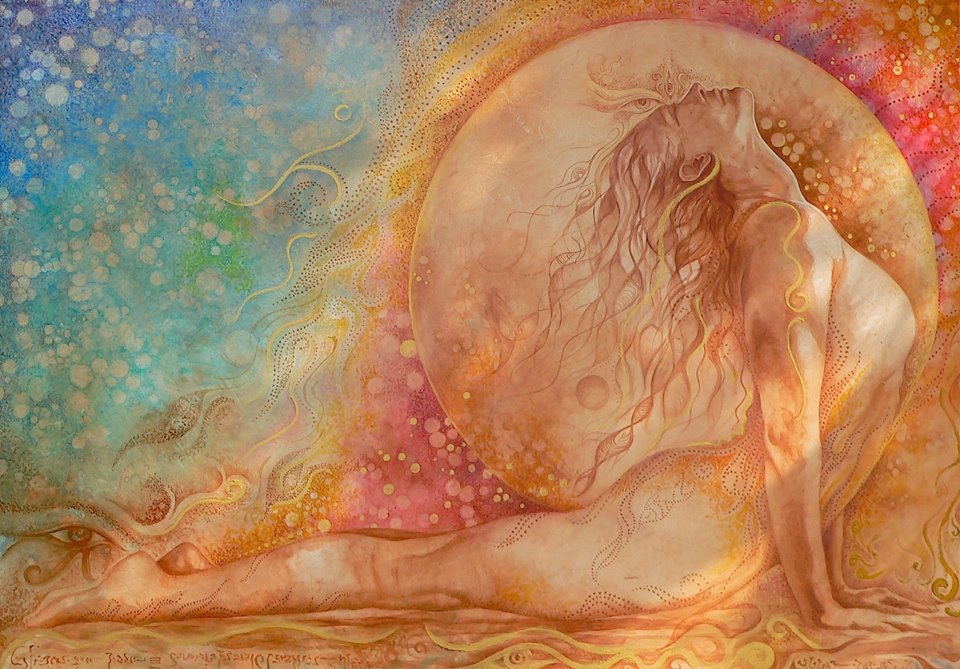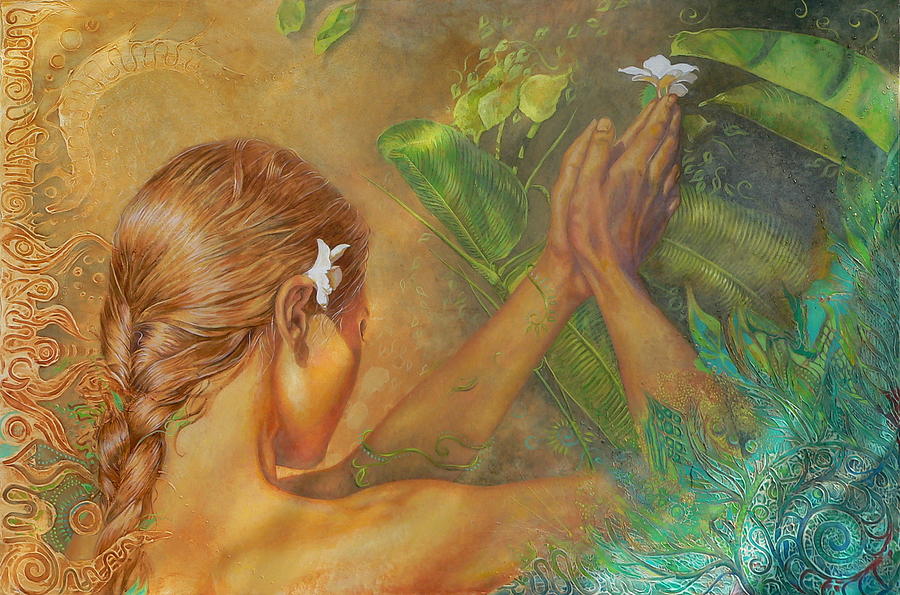“Tantra is the Goddess’s path, which means that it is for people who know how to use the physical and imaginal world as doorways into the ultimate, as well as for worldly delight. The Goddess is the mistress of these worlds as she is of the physical world, which is why at the heart Tantric practice there is deep respect for the feminine as spiritual authority.”
– Sally Kempton
This was the question posed to us in the first session of Faces of Power: An Indian Goddess Odyssey. (Which by the way, if you are interested in Indian mythology and wisdom I highly recommend these courses. Presented by Dr Raj Balkaran. I popped a link in below.)
Anyway, I digress (already? right?) So what was the question? Oh yeah. What if God was a She?
So Dr Raj, as we affectionately call him, his little posse of Goddess lovers, posed this question. It seems reasonable given we were about to embark of a study of divine feminine power, AKA the Goddess, but then he started to unpack this question and it kind of blew my mind. He does that. He’s actually very good at it. You think he’s just telling you stories, which he does, and then BOOM! mind blown.
So this idea, of feminine divine power is not new to me, I have been deeply immersed in goddess devotion for many years. What struck me deeply was his assertion that most of us in the West, whether Christian, Judaic or Muslim, have grown up in a culture where God is male. Okay, so far nothing new. But what kind of man is this male God? Well, he’s pretty detached, punitive and he’s of the desert. He doesn’t indulge in the kind of creativity that comes from commingling with bodies, there’s no genitals mentioned. He just summoned forth the world entirely on his own, from the force of his will and the power of his word. And on a deadline, one week to the day. And then he rests, somewhere far away from his creation.
Unlike all of the rest of creation (which is generally assumed to be in his image,) there’s no genitals, no uterus, no feminine contribution at all. This is a creation story entirely devoid of sensuality, of sexuality. It’s as dry as the desert he comes from. Now I do know in most of these traditions there are esoteric teachings that do involve the divine feminine – not to mention the profound feminine influence of Mother Mary and Sophia in these traditions, but what I am referring to here is the kind of God that is deeply ingrained in the psyche of anyone who grew up in an Abrahamic religious culture – the almighty power, the Alpha and Omega – and that God is a man. For many like me, possibly with a booming voice and a long white beard and flowing robes, standing in, yep, you guessed it, a barren desert.
The lone male in the desert is powerful analogy for me, in contrast to this Divine Mother, intricately embedded in the elements, in the land, the waters and in us humans. (Interestingly one of the epithets for Goddess Lakshmi is “moist” – isn’t that a beautifully sensual and evocative word for the divine feminine?)
“Divine Awareness manifests this world as an expression of its own joy. This remains true even when everything seems to be totally screwed up. It is the fundamental paradox of manifestation, at the core of tantra, that both ecstasy and suffering can co-exist within the overarching awareness.”
– Sally Kempton
“Asexual command,” is how Dr Raj describes it. Doesn’t that sound fun? Anyone list that in their Tinder profile? Either consciously or unconsciously, for those of us raised in these cultures, we understand that God is a he, and that male virtues are virtues, while feminine virtues are, well, something else, and are undervalued. It’s embedded in our very culture.
Now right here, I want to be clear that masculine and feminine does not pertain entirely to gender, it may somewhat, but we can all see that all humans have a degree of both. In fact the entire system of Tantrik yoga, which I’ll get to in a minute, if I don’t go off on another tangent, which I probably will, is entirely devoted to the awareness and mastery of the self through the ability to balance and direct these energies effectively.
So taking aside all your gendered stereotypes, just ask yourself, your innermost being, what if the divine was a She? What if the supreme being was feminine? Now obviously a supreme being is totality, so these divisions don’t really apply, but they do exist in our psyche and this plays out in every aspect of our lives and culture and how we are in the world. So ask yourself. What if God were a She?
And not a detached, disembodied woman, but an effulgent, bodacious, omnipresent, omnipotent, fierce, fertile and sensually powerful She.
Not a linear God that creates from nothing into a linear world where we are born, live and die. Our only chance at liberation in the afterlife, if we are lucky enough to graduate there. But a cyclical goddess, where all of life rises and falls as waves from the same cosmic ocean, nothing ever dies, it just plays in the endless cycle of creation, sustenance and dissolution back to the ocean of potentiality. Where liberation is always viable because everything is an aspect, an expression of her divine nature. She never abandons us to our messy lives, as she is in everything.
I truly believe this is what the Tantrik world view has to offer us. This is why so many Western women (and men, but it’s predominantly women) are experiencing deep awakenings through yoga. This is why I wanted to write this blog post because I am so fatigued by people thinking yoga is bending yourself into a pretzel while wearing fancy pants, and Tantra is sex. No! Just no.
Tantra is a school of wisdom teachings (actually many schools, but that’s a blog post in itself) that teaches embodiment. It teaches us how to access the divine through our human bodies. It teaches us that the very energy that courses through our physical being, that Kundalini Shakti is nothing other, nothing less, that this divine feminine energy. It’s God. And God is a She.
Now my dears, I know God is a loaded term, but let’s think of it as our fullest potential, as aligning ourselves with this untapped resource that we can access to become the best possible expression of ourselves. That’s all. The spiritual journey is a path of evolution, to realize all the untapped potential, that 96% of the mind that we don’t use, learning how to harness that.
I create the Father of the universe on the summit of the worlds. My origin is within the cosmic waters, in the universal sea. From there I extend to all the worlds and touch the ridge of Heaven. I blow like the wind, setting in motion all the universe. Far beyond Heaven and beyond this Earth extends my greatness.
– Vak Ambhrini, Rig Veda X. 125. 7-8
Let’s examine this a little. We all came from a woman’s body, yes? We talk of “Mother Nature” not father nature. We see in animals the commingling of the sexes to create new life, yet it is the female who births.
Would it not be intuitive then to see God, the ultimate creative power as feminine? In fact there is much evidence to suggest that our ancient ancestors thought exactly this, that the feminine was the form of divine creativity. That the mother was worshipped as the “Great Mother” the divine creator birthing all of life.
In the Indian tradition the world originates from the Hiraṇyagarbha – the cosmic womb – and all manifest reality is churned from the cosmic ocean of milk, both very feminine images. Yet the Hindu tradition was not immune to this God as male story either. Many of the early texts refer to this cosmic womb as Brahma, the creator God of the Trimurti of Brahma, Vishnu and Shiva, creator, sustainer and transmuter.
Yet this ancient understanding of the Divine Mother never died out in India, as it did in so many cultures. The evidence is in art and temples of goddess worship which was most likely practiced as early indigenous shamanic traditions and adopted by early Tantrik practitioners.
Many scholar/practitioners of yoga believe these practices are encoded in the mythic stories of the Hindu tradition, notably the Puranas. A body of writings which spanned for a period of nearly 2000 years, and include a particularly fascinating text called the Devi Mahatmya, or “The Glory of the Goddess.”
The Devi Mahatmya text is a devotional text, and its aim is to praise the Divine Mother, in order to receive her power, her blessings, her protection, her Shakti. The philosophical foundation of the text is of the female as the primordial creator, and as the Tridevi, the secondary creator, the sustainer, and destroyer. She is presented, through a language of praise, as the one who dwells in all creatures, as the soul, as the power to know (jyana shakti), the power to will (iccha shakti) and the power to act (kriya shakti). She is the consciousness of all living beings, she is intelligence, she is matter, and she is all that is form or emotion. In short she is everything from the most absolute and divine (nirguna), to the most mundane and embodied (saguna.)
As well as being a deeply devotional text, it is also embedded (in a similar way to the Bhagavad Gita) with a cogent life philosophy and esoteric teachings.
I’m so grateful to scholar practitioners (someone who both studies and practices yoga) for bringing this text to light. It is equally as amazing as the Bhavagad Gita and yet possibly moreso because it glorifies the divine feminine power.
That’s part of what has propelled me to write. Honestly, I just haven’t felt compelled to write in a very long time, which I find sad as I think of writing as my primary form of creative expression. But recently as I have started to dive deeper into the teachings with my Chakra Sadhana students, I am finding a real hunger for this knowledge. It feels as if this wisdom is deeply embedded in us, and these wisdom teachings and yoga technologies are the key to unlocking them, and the shakti, the power that sustains them as a living, breathing intelligence in our bodies.
When people ask me what kind of yoga I teach, often smirking and enquiring about my body-bending-pretzel capabilities (“you must be very flexible”) what I always want to say is that yes, my body is healthier and more nubile than ever, but it is my mind, my consciousness that is truly wonderful. I want to say that I am a Tantrika, a practitioner of Tantrik yoga but everyone in the West thinks that means sex. It doesn’t. It doesn’t exclude sex either. See that’s what’s so delicious and tantalising about Tantrik yoga. It’s embodied.
“Tantra can perhaps best be defined as an energetic approach to the spiritual path, using various techniques including mantra, ritual, Pranayama, and meditation.”
– David Frawley
Unlike the austere and detached desert father God, the Goddess is both fully transcendent and fully embodied. She is all aspects of being. which is why there are so many “small ‘g’ goddesses” in India.
There’s the goddess of outcasts, of entering the invisible “older woman” years, even of diseases like small pox (some of these are thriving in CoVid times).
The are villages goddesses, “small ‘g’ goddesses” and then the great Goddesses the TriDevi (tri = three Devi = goddess), and in and through and around all of that, emerging from as, an aspect of, is the great Goddess, the Divine Mother, the ultimate power. Like a power source that all these luminous lights are plugged into, they embody and emanate her power. (And so do we)
Yet, she is all of this at once, she operates on all these levels, both as unmanifest and manifest. When we worship one aspect we worship all.
So it’s no wonder really when the notoriously uptight and repressed British arrived in India and saw images on temple walls of voluptuous goddesses and erect phallic symbols that they jumped to the conclusion that the Hindu religion was some kind of sex cult. And no less the hippy trailers who descending on India in the sixties and seventies, running from these repressive cultures, thought they found the Mecca of free love (no they just projected this notion onto the ashram scene with the implications of that still resounding today.)
Tantrik yoga is not about sex, nor is it not about sex, it’s just not obsessed with sex. See this is part of the problem with our male ascetic God, there’s no modelling on what healthy sex might be. On what healthy integration of the masculine and feminine principles might be. In Tantra there is an understanding of the need to balance our energies, including the masculine and feminine, the Shiva and Shakti. And that’s what those sexy temple images are representing. Not, let’s get down on the temple floor, but the divine union of Shiva and Shakti, which is a union of subtle energies, of the prana or life force as it moves up the central channel, uniting at the third eye. The ultimate cosmic consummation.
And of course the masculine is revered here too. In the Tridevi/Trimurti aspect of the divine, the Gods and Goddesses operate in consort with each other: Brahma and Saraswati as the creative consciousness and power, Vishnu and Lakshmi as the sustaining consciousness and power and Shiva and Kali as the destroying or transforming consciousness and power. They operate as a unified energy, like the Taoist image of Yin Yang.
The broad approach of Tantra contains ways to turn all ordinary activities – including breathing, eating, and sleeping – into rituals or sacred actions, but this does not mean Tantra is promoting such activities for ordinary gratification.
-David Frawley
So who cares? Most of us probably don’t associate with a religious world view, well not consciously, who cares what gender or atttributes our culture ascribes to God?
Well, that’s the rub isn’t it, because there’s a good chance that even the most agnostic amongst us is unconsciously embedded with this notion of this male desert God. An omnipotent power force devoid of sensuality or feminine traits, a power that seems detached from our everyday lives. What if that wasn’t the deal at all?
What if God, or Goddess, was so intricately and implicitly embedded in every layer of existence that we miss seeing her. Or only catch a conscious glimpse in times of awe, a sunset, a flower, a newborn baby?
What if every emotion, every flush of delight, of pleasure, of sadness, of joy, was shakti, was this mother divine flushing through you? What is She is inherent in every breath, every cell, every particle of life? Wouldn’t that change how you see life, how you see nature, other beings? How you see yourself.
This to me is yoga. I can’t do a handstand, or stick my head out between my legs, but I can sit and enter a state of conscious communion with this Divine Mother. I can engage in yoga technologies like kriya and pranayama, which activate the Divine Mother energy, the Kundalini Shakti in my body. I have learned how to access Sat Chit Ananda, truth, consciousness and bliss from my very mundane physical state.
The Goddess Speaks: Before the beginning of the universe I alone existed, with nothing other than myself. That Self-nature is called by the names of consciousness, wisdom and the supreme Brahman.
– Devi Gita IV.3
This yoga is body affirming and world affirming, it does not deny the physical world but sees it as a temple from which to embody the divine, to experience the highest expression of this life force.
And beyond the feeling of union and ecstasy of these practices allow me to embody, is a sense that if only more people had access to them and understood what they really do, couldn’t we live in a different world?
Dr Raj talks about the different leadership styles represented by the feminine divine. What does it mean to embody this approach to life?
I had a wonderful coaching session this week with my friend Katie Durgā. Her philosophy is that we have all the wisdom we need, but sometimes we need a bit of guidance in clarifying it. She took me through this session, focusing on current issues as well as a vision for my dream life. From this she helped me find some practical daily actions to work towards my goal of “channeling all of my energies into my dream life”
To me this exemplifies the feminine approach, drawing the wisdom from within rather than looking to external figures of authority to “tell” us what to do. As well as allowing the heart intelligence to guide us, appreciating it as an equally valid source of wisdom as the intellect.
What if God was not only a She, but an infinitely loving and involved Divine Mother, embedded in all things, in everything. Alive and pulsing through our every breath, through every shared word, and every interaction with other living beings. And what if we understood that our every moment, every thought, every action is co-creating the world with the Mother Divine. Would we not choose to live a little more harmoniously, a little more reverently. Would we not be creating a different reality?
Jai Ma!
Christina
ॐ
Christina is a Chakradance facilitator, Sattva yoga teacher, holder of sacred space, and wellbeing writer. She is passionate about wellbeing and brings her extensive knowledge though studies in the chakra system, yoga and shamanism to her practice.
Check out Dr Raj’s amazing wisdom school teachings at rajbalkaran.mykajabi.com
And Katie Durgā Mindfulness for some Goddess focused Yoga and Life Coaching at durgamindfulness.com
And of course, myself Ms Raw Mojo, bringing you Chakra Yoga and Chakradance to awaken your kundalini shakti – the divine within at rawmojo.com.au



